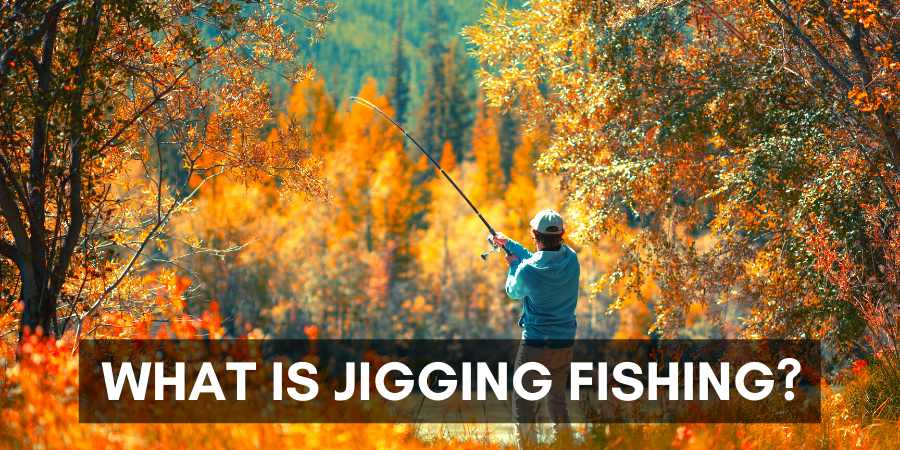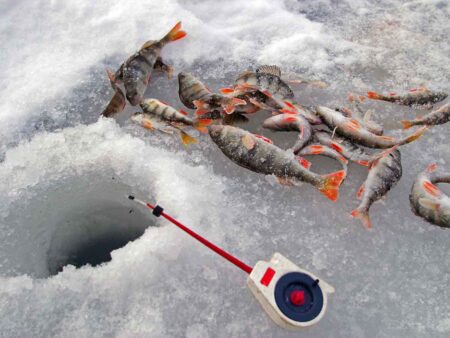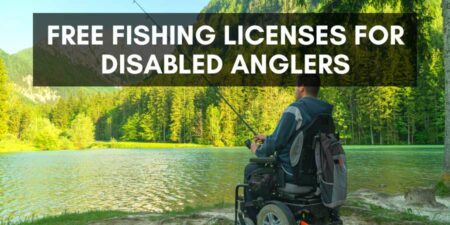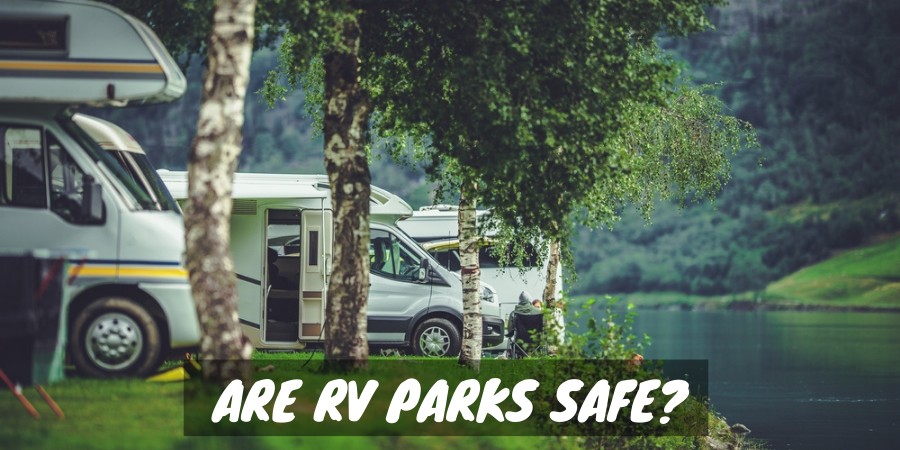Many RVers love to fish when they go camping, and jigging is a very popular form of fishing.
What is jigging in fishing? Jigging uses a jig, or artificial lure, on a fishing pole instead of living bait, making this fishing style ideal for RV life.
There is more to jigging than meets the eye, and I thought it would be helpful to put all the details about this type of fishing, including best fishing holes, into one concise guide.
Once you read to the end, you may find a new way to enjoy your next RV trip, so let’s start!
What is Jigging?
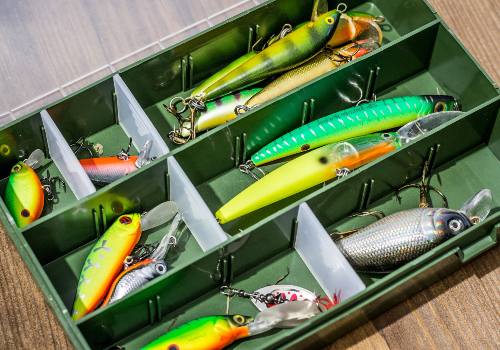
Jigging is fishing with a lure instead of living bait.
The lure you use has a specific design, with a hook melded into a lead sinker and then covered in a soft body and often small feather details to mimic an insect or small fish.
The design of jigs creates a popping or jerking motion as it rises vertically from the bottom of the lake, river, or ocean, depending on how you play the line.
You can also cast the jig and pop the tip of your fishing pole as you slowly reel in the line horizontally.
For freshwater jigging, you can use a lightweight rod and reel combo, which makes it an ideal way to fish for all age groups, from little kids to elderly adults.
There are two ways you can jig. One is “fast jigging,” and the other is “slow jigging” or “slow pitch jigging.”
Fast jigging is the standard motion, where you move the lure in a way that resembles the bait trying to escape predators.
Slow-pitch jigging is a more relaxing motion that moves the lure in a way that resembles injured bait trying to lift off the bottom.
The benefit of slow jigging is that resting fish will still attempt to go after such an easy meal, whereas fast jigging will only attract actively feeding fish.
Is Jigging an Easier Way to Fish?
Jig fishing has its pros and cons.
Some people find it a much easier and more productive way to fish, while others prefer the slow pace of casting out a line with a bobber and waiting for a fish to take the worm or other live bait.
Here are the top pros of jigging fishing:
- Does not require live bait
- Simple technique to learn at any age
- Attracts more fish to bite
- Basic rod, reel, and accessory kit are inexpensive
- Works in just about any body of water
BENEFITS OF ARTIFICIAL JIGGING BAIT
The biggest pro for RVers who love to fish while on vacation is not carrying around live bait.
Most live bait needs to remain cool to avoid worms, bee moths, or other fish-attracting critters from dying, which may mean placing it in your already small RV refrigerator.
If they go bad inside your fridge or RV, the smell will be awful and will permeate the entire camper.
Minnows will need to be in a bucket of water with an aerator to keep them alive, creating problems during RV travel.
Jigs allow you to place a large variety of lures into a small tackle box, so you’re ready to fish at a moment’s notice with no worry of spills, messes, or odors.
JIGGING IS SIMPLE TO MASTER IN ANY WATER
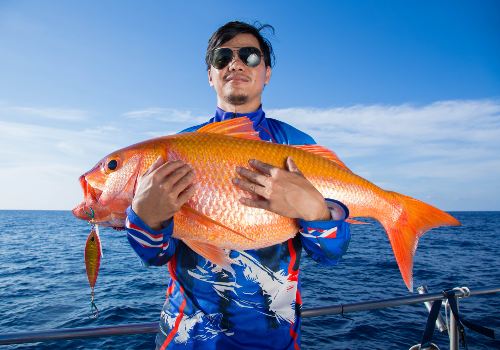
The art of jigging requires a few short lessons on the best way to jerk the lure through the water.
It may be much easier for smaller kids or older adults to quickly lift the top of the fishing pole a few inches to snap the jig upwards in the water and then let it drop to the bottom.
You can also move the tip sideways to jerk the lure horizontally in the water as you slowly reel in the line.
Vertical jigging is also easier as it doesn’t require any casting, but only the need to drop the jig to the bottom of the water and then reel the line back in.
Other fisherpersons prefer to use the reel to create the jerky movement of the jig by cranking a quarter or half turn quickly, then pausing for a few seconds.
Either jigging technique works, but one may be better than the other, depending on fishing conditions. For example, you’ll most likely need to horizontal-jig in shallow lakes or rivers and can vertical-jig in deeper waters.
For more information on this fishing style, check out this article on how to jig from TakeMeFishing.com.
JIGGING ATTRACTS MORE FISH TO BITE
Jigging works wonderfully to attract hungry fish as the lure’s motion triggers an instinctual urge to bite. In addition, the jig’s motion will appear to be an injured bug or fish struggling to get away, which is irresistible to all sizes of fish.
Jigging is also more interactive in the water. The lure will constantly move up and down, giving more fish a chance to notice the bait.
A worm on a hook and bobber sits in one location, and once the worm quits wiggling, only nearby fish will come around to investigate.
JIGGING KITS ARE AFFORDABLE
- The small metal jigs are laser holographic painted with 3D eyes to produce a true-to-life look underwater.
- Long casting. Solid construction offer effortless maximum casting distance.
- Slim profile generates erratic action when jigged and ripped through the water, entice fish to strike and the feather treble seal…
- Ideal for freshwater and saltwater. With extra corrosion resistance coating to withstand saltwater abused. Catch bass, bluefish,…
You can turn any fishing pole into a jigging rod, which means you don’t need to invest in high-dollar rods and reels.
With the addition of a few jigs to your tackle box, the whole family can enjoy a day on the water, having fun trying to catch dinner to cook and serve at your RV campsite.
Cons of jigging fishing:
- Must purchase specific lures or jigs
- The fishing action is constant, which may become tiresome
- Easier to snag-jig onto branches/debris on lake, ocean, or river bed
COST OF BUYING JIGS
If you plan to make jigging a regular part of your RV camping adventures, you’ll want to invest in a wide variety of jigs for your tackle box.
Large fish are attracted to regional insects and small baitfish, which have a particular shape and color. So, trying to use a jig that works like a charm in Minnesota may not work at all to attract fish in the Gulf of Mexico.
Stopping into the local bait shop on your RV trips will allow you to ask about which jigs are best for that area so that you can build your fishing jig arsenal.
JIGGING CAN GET TIRESOME
Jigging takes effort to keep the lure moving in the water. Granted, the motion doesn’t need to be strenuous, but it is constant, which may get tiresome after a while.
JIGS ARE EASIER TO SNAG UNDERWATER
Jigging usually requires the lure to hit the bottom of bodies of water, where debris like logs or branches commonly accumulate, especially in rivers.
Unlike fishing with a bobber that keeps the bait closer to the water’s surface, the jig’s heavy weight will place it in a position where it’s more likely to snag up, leading to broken lines and lost lures.
Jigging Supplies – What You Need
- Christmas Gift:The Best Christmas Gift,Birthday Gift for Your Friends,Your Familes,and Fishing Enthusiasts
- Material: Plastic and metal.The detailed patterns and life-like colors simulate bait fish and steel ball bearing rattles offer an…
- Position:Lake,pool,river,sea,pond,stream
- Fishing Lure Set is one of the most awesome fishing lure Kit to ever hit the market.For anyone who loves catching Trout Bass…
- Package content:275pcs fishing lure pack in a pvc box ,it is easy to take.
If you want to pack your RV with gear to go jigging fishing, here are the supplies to pack:
- Fishing license
- Fishing poles
- Jigs (lures)
- Tackle Box with fishing accessories
First and foremost, you’ll always want to ensure you have the correct fishing license for yourself and your camping guests.
Each state varies in fishing regulations and costs. Most allow children 15 and under to fish without a license, while coastal states often require separate fresh and saltwater licenses.
Luckily for RV fishing enthusiasts, most states offer a short-term license at a reduction in price for use during vacations. Also, there are free fishing licenses for disabled anglers.
The price you pay for a license may hurt your camping budget a bit, but paying a fine for not having the correct papers will cost even more. Plus, you get to save money on food when you bring home your day’s catch!
Jig Fishing Lures
- 【Top Quality Lead Jig】Full Lead streamlined body can drop faster into the strike zone to attack deep water fish. Paint on both…
- 【Ultra Strong Multi-layer Coating】Crafted with multi-layer seal coating, it mimics fish scales reflect light in the water so…
- 【High Performance Fishing Jig】Weight balanced design will make this jig lures 360° rotate fastly to mimic an injured baitfish…
- 【High Strength Steel Hook】 Built in high strength steel hook, strong, sharp, and corrosion resistant, allowing for quicker…
- 【Target Various Fish Species】Available in 3 colors of Blue/Green/Pink and 4 size of 2.82oz/80g, 3.53oz/100g, 5.29oz/150g,…
There are different types of jigs for all kinds of fishing situations, so having a nice variety will give you more flexibility when one jig isn’t attracting bites, as you would hope.
If you are new to jigging, pop into the local bait shop and ask questions about what jigs are best in that area.
Fishing Poles and Supplies
The rest of your jig fishing gear will consist of your poles, reels, line, leaders, scissors, clippers, pliers, etc.
Please make sure you also have a measuring tape and handheld scale for fish with weight or size restrictions to bring them back to your RV campsite or home.
Again, most standard fishing poles are fine for jig fishing. All you need is to tie on your jig and ensure your line strength is tough enough for the fish you’re trying to catch.
Lastly, make sure you have a cooler and ice to keep your catch cold until you have time to clean and eat the fish.
6 Types of Lures for Jig Fishing
Here are the most common jig types with unique shapes and purposes when fishing to help you succeed.
1. Swim Jigs
- Streamlined balanced head
- Perfect Skirt
- Medium wire ultra sharp hook
- Great for targeting Largemouth, Smallmouth, and Spotted Bass
- One (1) per pack
Swim jigs have a shape that makes the lure appear to be swimming through the water. The shape of the head will have a bullet shape and a small weed guard to enable the jig to pass more easily through the water without snagging.
Swim jigs are excellent for attracting bass and crappie and work well in often weedy lakes and rivers.
2. Casting Jigs
- Great product
Casting jigs are the most multi-purpose of lures, as they have a design that helps them stand up off the floor of lakes, oceans, or rivers. As a result, most fish types will go after a casting jig.
Casting jigs allows you to add on a rattle and various jig trailers such as grubs, crawfish, or other tempting shapes.
3. Grass Jigs
- 1/2 ounce lead-free bass jig
- Equipped with 7/0 Owner hook, the sharpest hooks second to none
- Custom double keeper for trailer
- Exceptionally weedless bass jig with a durable paint finish
- Made and hand assembled in the USA
Grass jigs are the lure to grab when you see grassy weed beds in your fishing location. The shape of the jig head is conical, with the line tie-off at the top, which helps it glide through tall, thin weeds with ease.
Since there will be more tension when fishing in grassy bodies of water, you want your line, hook, and lead to be heavier if you need to pull your jig free of entanglements.
Want to Connect With a Community of Over 1,078 RV Enthusiasts?
Fish that love to hide in weeds, such as bass and bluegill, will enjoy going after grass jigs.
4. Flipping Jigs
- GET UNDER COVER: Reaction Tackle’s tungsten flipping jigs for bass fishing are designed specifically to pitch or flip the…
- LIFELIKE PRESENTATION: With high quality silicone skirts, Reaction Tackle’s bass fishing jigs have a vibrant and lifelike…
- WEED PROTECTION: People love our bass jigs for the practical touches we add to our fishing equipment; Each one of our jig heads…
- TUNGSTEN HEAD: Our bass fishing gear features tungsten jig heads for extra sensitivity; With 97 percent pure tungsten, each of our…
- QUALITY: Each bass fishing jig has undergone stringent quality inspection and hours of development with professional anglers; Our…
If you’re fishing in bodies of water with many visible branches, logs, or brush, a flipping jig is the one to grab, especially if you’re bass fishing.
Flipping jigs have a pointy nose, heavy-duty hook and weed guard, and a recessed line tie to keep the lure from breaking or snagging up. Integrated rattles are also very common on flipping jigs.
5. Finesse Jigs
- Number one in fishing sports
- Manufactured in the country of China
- Made of the highest quality material
When you want to reel in smaller fish like bluegill and perch, a finesse jig is light yet tough enough to attract some attention. Most finesse jigs weigh under 1/4 ounce.
The jig will have a small, round head, thin body, and short skirts that resemble many insects in the larval stages.
6. Football Jigs
- Designed by Bassmaster Elite Series pro and jig fishing guru David Walker, including carefully designed skirt color schemes
- Traditional football-shaped head and custom molded v-shaped weedguard ideal for probing rocky or gravel covered bottoms without…
- 5/0 long shank, round bend VMC black nickel hook ideal for targeting larger bass
- Hand-tired copper write trailer keeper oriented on top of hook to prevent tearing chunk-style trailers
Football jigs have a pointy yet full head that sits sideways and a wider skirt that lets the lure drag over rocky bottoms without getting stuck in cracks and crevices.
The hook is wide and sharp, and the weed guard is durable. In addition, you can choose to add trailers for more hits.
Football jigs are great for bass fishing, but other fish species will go after the lure if they are big enough.
Best State Parks to Go Jigging
RVing at state parks with campgrounds or visiting for the day in your camper is a wonderful way to create lasting memories.
Here are the top state parks across the US that fishing RVers love to visit:
Clear Lake State Park, California
Clear Lake State Park provides loads of fun jigging for crappie, catfish, and largemouth bass.
With four campgrounds to choose from, you’ll have more opportunities to find openings, but RV size is limited to motorhomes or trailers 35 feet and under in length.
Fishing at Clear Lake State Park, California (Video)
Bahia Honda State Park, Florida
Bahia Honda State Park in the Florida Keys has three camping areas for RVers, where you can enjoy ocean jigging for snapper and other delightful fish.
You can opt to charter a boat and head out into open waters or enjoy a relaxing day fishing from the shores. Book early for Bahia Honda, as it fills up fast if you’re planning an RV trip to South Florida.
Jordan Lake State Recreation Area, North Carolina
I love Jordan Lake Reservoir for jigging, as this body of water is immense and full of large and smallmouth bass, crappie, catfish, and white and yellow perch.
With hundreds of fingers and nooks, you can bring or rent a boat and find a hidden paradise to spend the day jigging for fish.
There are five camping locations around the lake with 1,000 campsites. This location is a top choice for RVers who love to drop a line in the water any time of year!
Starved Rock State Park, Illinois
Camping at Starved Rock State Park puts you directly on the Illinois River, where you can go jigging for white bass, walleye, crappie, and more.
The scenery here is stunning, with hiking trails, waterfalls, and canyons to explore.
Fishing at Starved Rock State Park, Illinois (Video)
Chatfield State Park, Colorado
Chatfield State Park is one of the best camping and fishing spots in Colorado during the summer months.
You can try your hand jigging for bass, perch, crappie, walleye, and catfish, then head back to the 197-site campground to cook up your catch.
Lake Guntersville State Park, Alabama
Lake Guntersville State Park sits on Alabama’s largest lake and has an abundance of largemouth bass in its weedy depths. You can also fish for the brim, sauger, crappie, bluegill, and catfish.
There’s a campground for RV and tent camping, with a new online reservation system to make it easy to book your spot.
Galveston Island State Park, Texas
Galveston Island State Park will put your seaside jigging to the test for redfish, spotted seatrout, black drum, and more.
Camping is available, with 20 electrical hookup campsites for recreational vehicles and 10 with water for tents only.
Fishing at Galveston Island State Park, Texas (Video)
Lake Wanahoo State Recreation Area, Nebraska
Lake Wanahoo State Recreation Area offers RV camping and will keep you busy with days of fishing enjoyment.
The lake is stocked with crappie, walleye, largemouth bass, bluegill, blue catfish, and northern pike. The scenery is unbelievable, especially at sunrise and sunset.
Final Thoughts
Jigging is a fishing style that suits the RV life perfectly, so you can avoid stinky live bait and still enjoy a day out on the water.
Camping and fresh-caught fish over the campfire is a treat everyone should get to experience. I hope you use this guide to gear up for jigging and make a reservation at one of the campgrounds above to test your skills!
"Man cannot discover new oceans unless he has the courage to lose sight of the shore."
-- Andre Gide

